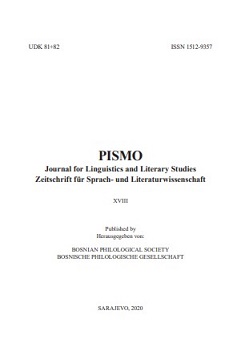Elementi hipertekstualnosti u romanu al-Zaynī Barakāt Ğamāla al-Ġīṭānīja
Elements of Hypertextuality in the Novel Al-Zaynī Barakāt by Ğamāl Al-Ġīṭānī
Author(s): Mirnes DuranovićSubject(s): Studies of Literature, Other Language Literature, Sociology of Culture
Published by: Bosansko filološko društvo
Keywords: intertextuality; transtextuality; hypertextuality; transformation; Ğamāl al Ġīṭānī; Al-Zaynī Barakāt; parody; pastiche;
Summary/Abstract: The novel Al-Zaynī Barakāt by Ğamāl al-Ġīṭānī is one of the most significant postmodern novels in contemporary Arabic literature, and therefore attracts the attention of literary critics around the world. Literary critics mostly point to al-Ġīṭānī’s rich narrative structure, but also to his recognizable references about the political situation in the Middle East, both at the time of the novel and today, especially when we try to observe the dynamics of the relationship between government and subjects. The plot of the novel is set in Cairo in the early sixteenth century, just before the Ottoman conquest of Egypt in 1517, taking place in the context of political instability and within an oppressive police state. The events are narrated from the perspective of numerous characters, and the narrative chapters are imbued with public proclamations, decrees, speeches, and other public and secret documents written respecting their medieval character. Among the narrative techniques used by the author, the use of intertextuality procedures stands out, which also represents one of the most distinctive characteristics not only of al-Ġīṭānī, but also of the entire Generation of 1960s Arabic literature. This paper points to the hypertextual elements in the cited novel. In this regard, we examine hypertextuality from the perspective of Gérard Genette, who by this term means any relationship that connects text B (hypertext) with the earlier text A (hypotext), and does not represent its commentary, but the transformation of the text (hypotext, text template), that we consider in two ways: as a transformation of the elements of the hypotext (parody) and as imitation of the hypotext (pastiche).
Journal: Pismo - Časopis za jezik i književnost
- Issue Year: 2020
- Issue No: 18
- Page Range: 163-177
- Page Count: 15
- Language: Bosnian

